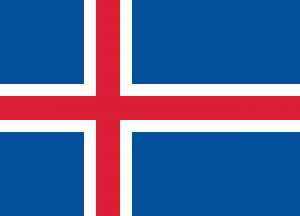Language/Icelandic/Vocabulary/Basic-Greetings
Introduction
In this lesson, you will learn the basic Icelandic greetings for everyday situations. Knowing how to say hello, goodbye, and thank you is essential when learning a new language, as it helps to build connections and start conversations with locals. By the end of this lesson, you will know the most important Icelandic greetings to use in a variety of social situations.
Saying Hello in Icelandic
Saying hello is the first step to introduce yourself and start a conversation. By using the correct Icelandic greetings, you can show politeness and respect to your conversation partner. Here are some of the most common Icelandic greetings used to say hello:
| Icelandic | Pronunciation | English |
|---|---|---|
| Hallo | [ˈhaːtɬɔ] | Hello |
| Góðan daginn | [ˈɡoːðan ˈtaɣɪn̥] | Good day |
| Góðan dag | [ˈɡoːðan taɣ] | Good day (informal) |
| Hæ | [haj] | Hi |
| Hæll | [haːtl̥] | Hi (informal) |
When to use "Góðan daginn" and "Góðan dag"
"Góðan daginn" and "Góðan dag" are commonly used Icelandic greetings to say hello. While they have the same meaning, "Góðan daginn" is more formal than "Góðan dag." You should use "Góðan daginn" when meeting someone for the first time or in a formal situation, while "Góðan dag" can be used in a more casual setting, such as with friends or family.
Saying Goodbye in Icelandic
Saying goodbye is another essential part of social interaction. Just like when saying hello, using the correct Icelandic farewell greetings shows politeness and respect to your conversation partner. Here are some of the most common Icelandic greetings used to say goodbye:
| Icelandic | Pronunciation | English |
|---|---|---|
| Bless | [ˈblɛs] | Goodbye |
| Sjáumst | [ˈsjau̯mst] | See you (informal) |
| Bæ | [paiː] | Bye |
| Bæ bæ | [pai pai] | Bye-bye (informal) |
Saying Thank You in Icelandic
Saying thank you is a way to show gratitude and appreciation. When traveling in Iceland, it is important to know how to use the correct Icelandic word for thank you. Here are the most common Icelandic phrases used to say thank you:
| Icelandic | Pronunciation | English |
|---|---|---|
| Takk | [taʰkː] | Thanks |
| Þakka þér | [θaʰka ˈθjɛr] | Thank you |
Additional Phrases to Use in Social Situations
Knowing a few additional Icelandic phrases can help with social interaction and make you feel more confident when speaking with locals. Here are a few examples:
- How are you? "Hvernig hefur þú það?" - This phrase can be used to ask someone how they are doing. It is a common greeting in Icelandic.
- I don't understand. "Ég skil ekki." - If you don't understand something, you can use this phrase to let the other person know.
- Excuse me. "Afsakið." - This phrase is used when you need to get someone's attention or apologize for something.
- Cheers! "Skál!" - This Icelandic phrase is a common way to say cheers before drinking.
Conclusion
In this lesson, you have learned the basic Icelandic greetings for everyday situations. By using the correct Icelandic greetings, you can show politeness and respect in social interactions. Remember to use "Góðan daginn" and "Góðan dag" appropriately and to use "Takk" and "Þakka þér" to say thank you. With these essential Icelandic phrases, you can start a conversation with locals and make the most of your trip to Iceland.

